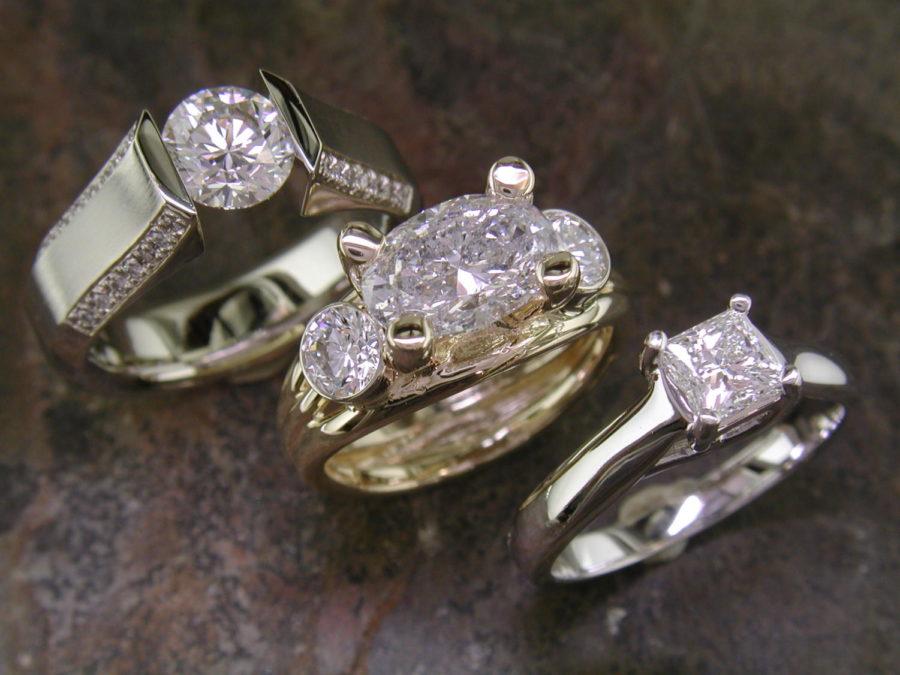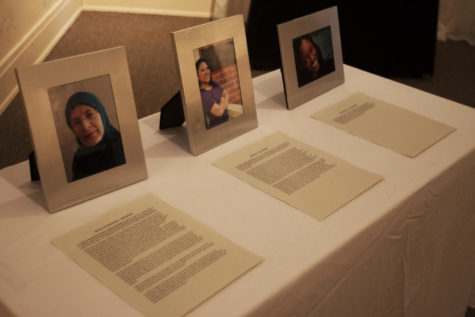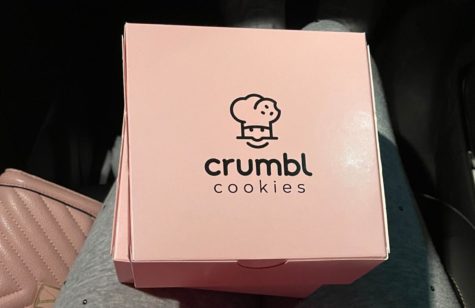Questions are key when choosing jewelry
Courtesy photo: Kyle Youngberg, Ames Silversmithing
Typical wedding ring metal types are 14K white, top left, 14K yellow, and platinum. The newer 14K white gold and platinum are indiscernible to naked eye. Courtesy photo: Kyle Youngberg, Ames Silversmithing
February 7, 2013
Diamonds may be a girl’s best friend, but selecting the right one may be a guy’s worst nightmare.
For all of those who have decided that a piece of jewelry is the way to go for their special someone this Valentine’s Day, they should first prepare themselves to make the right choice.
“Education is the key to making an intelligent purchase,” said Gary Youngberg, owner of Ames Silversmithing. “The reality is most people go into a jewelry store and feel ignorant.”
Youngberg explained that most people just don’t know what questions to ask when they enter a jewelry store.
Justin Gilger, co-owner of Gilger Designs, said that three things a buyer should educate themselves on are the “three c’s.” These include cut, clarity and color.
There is, of course, also carat, which Gilger explained is, “just the size or the mass of the diamond.”
Gilger said that he sees most buyers focus on cut and color, but forget about clarity.
When first entering a jewelry story, it is important to find not only the right questions but also the right person to talk to.
“It’s important that the people you speak to are GIA-certified,” Youngberg said, speaking of the Gemological Institute of America.
Youngberg explained that those who are GIA-certified have taken courses and received a degree so they truly understand the qualities of diamonds and how to properly explain those qualities to a customer.
One question that Youngberg suggested asking jewelry salespeople to see if they know what they are talking about is to ask what the crown angle of a diamond should be.
If they can’t answer that, you might want to look at another store.
Another issue that also comes to mind is the idea of “blood diamonds.”
Youngberg explained that this really isn’t a relevant issue to diamond buyers today. This is because of the introduction of the Kimberley Process Certification Scheme, which went into affect in 2003.
The Kimberley Process works to keep “conflict diamonds” from entering the market.
One thing buyers can do is check the certification of a diamond, but Youngberg pointed out that not all certifications are to the same standard.
“Diamonds rated by the GIA will be the most accurate,” Youngberg said, who explained that places such as the European Gemological Laboratory have different standards.

















